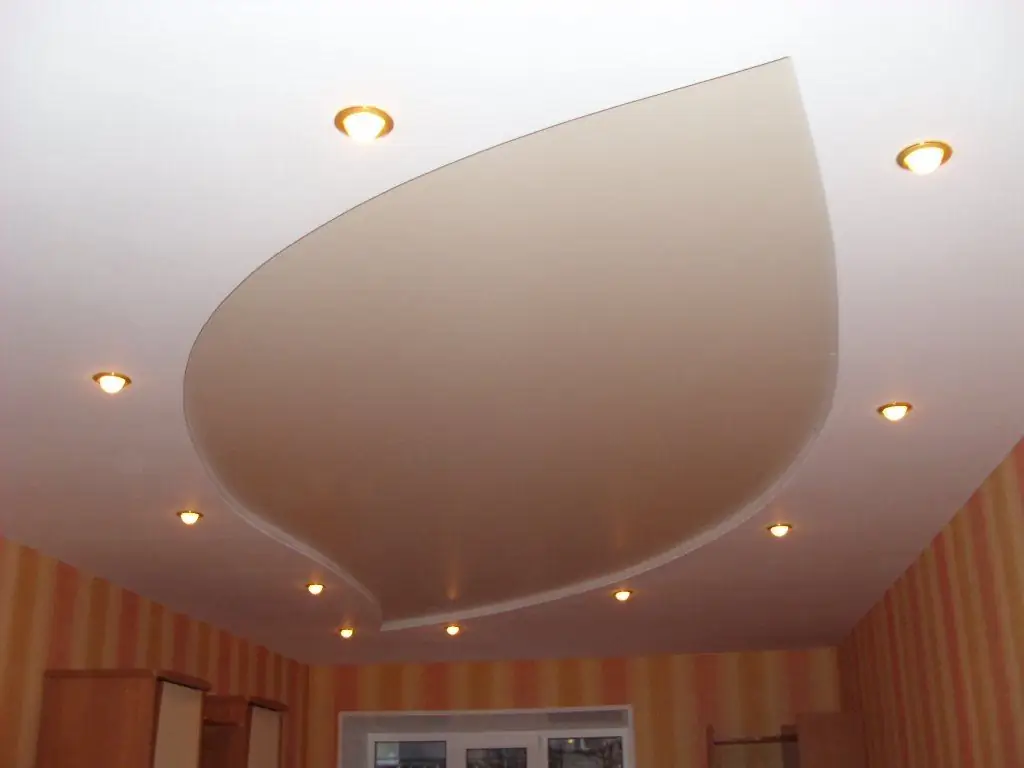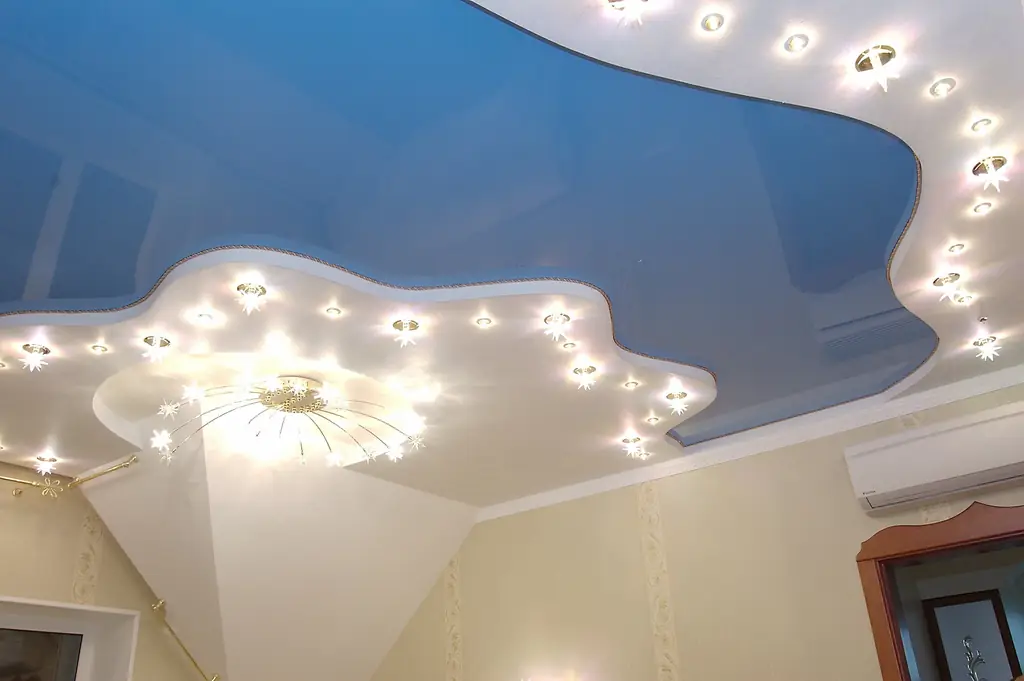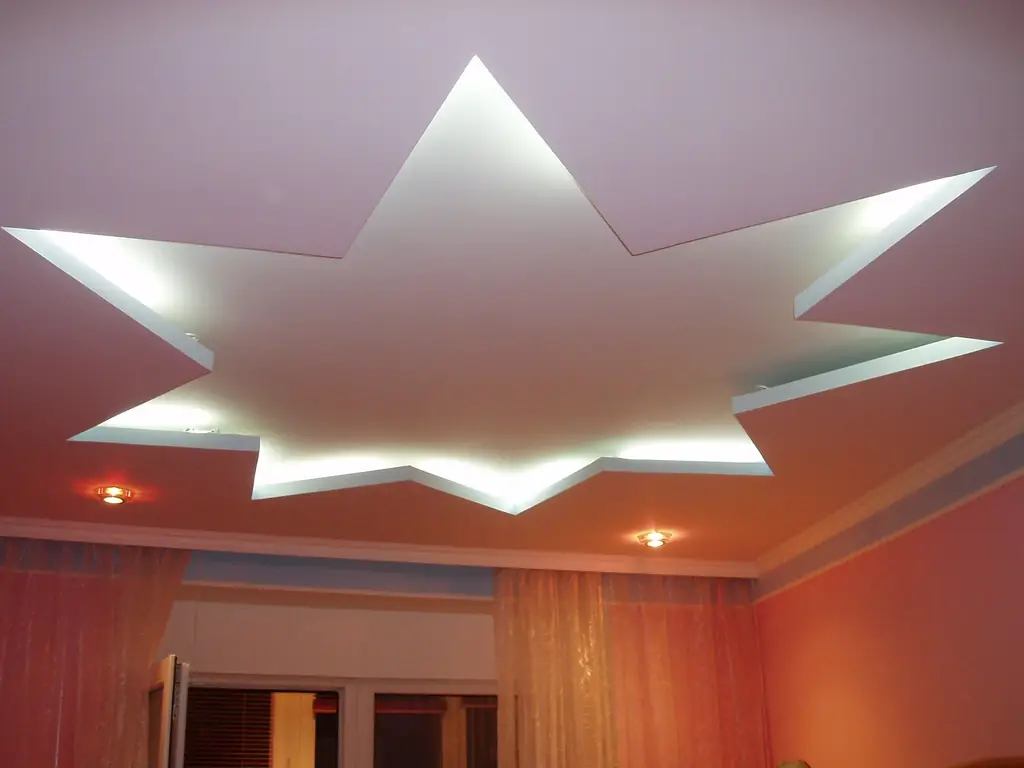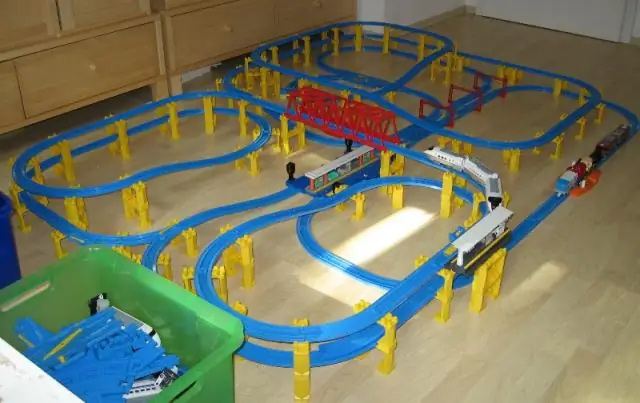
Table of contents:
- DIY ceiling repair: how to quickly and efficiently update the ceiling
- Types of ceiling finishes: comparative characteristics, pros and cons
- How to plaster the ceiling correctly
- DIY ceiling painting: we take into account all the little things
- Correct whitewashing of the ceiling with your own hands
- Repair of the ceiling with plasterboard: beautiful, functional, convenient
- We mount a multi-level plasterboard ceiling ourselves
- DIY ceiling repair video
- Author Bailey Albertson [email protected].
- Public 2023-12-17 12:53.
- Last modified 2025-01-23 12:41.
DIY ceiling repair: how to quickly and efficiently update the ceiling

As you know, the repair of the ceiling should be approached with no less attention and care than to all other structures of a house or apartment. And this work is quite responsible and difficult. We have all faced such a situation more than once, when the old finish becomes unusable, falls off, crumbles, cracks. And there can be many reasons for this.
But postponing repairs until later is not at all worth it, but it is better to start work as soon as possible. For this, you can hire a team of professionals, but the price of such services is usually very high. Therefore, self-repair of the ceiling is most often the best option, especially if you have some skills in construction work, and you are attentive to the advice and recommendations of specialists.
In this article, we will tell you how to make a redecoration of the ceiling without spending extra money, effort and time.
Content
- 1 Types of ceiling finishes: comparative characteristics, pros and cons
- 2 How to plaster the ceiling correctly
- 3 Painting the ceiling with your own hands: we take into account all the little things
- 4 Correct whitewashing of the ceiling with your own hands
- 5 Repair of the ceiling with plasterboard: beautiful, functional, convenient
- 6 We mount a multi-level plasterboard ceiling ourselves
- 7 Video about repairing the ceiling with your own hands
Types of ceiling finishes: comparative characteristics, pros and cons
We are used to thinking that during the renovation, first of all, the ceiling is finished, and then the walls and the floor, in this sequence. But modern technologies make it possible to break this tradition without harming the interior. For example, you can easily fix a ceiling tile or install a stretch ceiling without damaging the walls.

There are several types of ceiling repairs that are quite simple to perform. We will consider them in detail to make it easier for you to choose the most suitable option.
- The first option is whitewashing, which has been used for many generations. It can be chalky and limestone, among modern materials - completely ready to apply. Its advantages include low price, resistance to temperature extremes and ease of application. The disadvantage is that the whitewash is short-lived: it crumbles, cracks and is afraid of moisture. In addition, you will have to carefully prepare the base for such a coating.
- The second option is painting. For this, there are many types of paints: glossy, acrylic, water-based, matte, latex and others. They are inexpensive, and maintenance of the painted surface is quite simple. But for painting work you need experience, the paint eventually loses color and cracks, and the base will need to be prepared.
- The third option is to decorate the ceiling with your own hands using wallpaper. For this, fabric, non-woven, or special wallpaper for the ceiling and for painting are used. This method is cheap and also helps to visually level the surface. But wallpaper wears out quickly, and it is very difficult to glue them to the ceiling.
- The fourth option, very popular in recent years, is a plasterboard ceiling. There are many types of such ceilings - single-level, multi-level, stepped, geometric and others. They are easy to install, do not require surface preparation, and allow you to build in additional insulation and lighting fixtures. Among the disadvantages: drywall will close access to communications.
The main criterion for choosing the required material is in which room it will be applied. In the living room, bedroom, you can use any type of ceiling, and for the kitchen and bathroom you will need moisture resistant material.
How to plaster the ceiling correctly
Ceiling plastering is an option that deserves special attention. This type of work is ideal if you need to quickly repair areas or remove some surface defects. For plastering you will need:
- Putty knife;
- Stiff brush;
- Wire brush;
- Ladder;
- Lighthouses;
- Priming;
- Putty.
Before proceeding, remove all furniture from the room to keep it from getting dusty, or cover with covers. Use a hard brush to clean the areas where the old plaster has fallen off, and remove the loose parts with a spatula or wire brush. Prime the surface with a deep primer in two to three coats at intervals of several hours to dry.

Prepare the required amount of putty and apply evenly on a completely dried ceiling, carefully smoothing the layer.
When the layer of plaster is completely dry, treat it with sandpaper or fine sandpaper. After that, you can paint the ceiling. Plaster can act as a base for painting, and as a ready-made option, depending on the material.
DIY ceiling painting: we take into account all the little things
Since we have already plastered the ceiling, then you can take a closer look at its painting. As mentioned above, painting the ceiling is well suited for rooms with high humidity - kitchens and bathrooms.
So, to work you need the following:
- primer;
- putty;
- gypsum solution;
- sealant;
- water-dispersion or water-based paint;
- cement;
- antiseptic;
- brush;
- sandpaper;
- putty knife.
The surface is already prepared for further work. The only thing that can be added: if you paint the ceiling with your own hands in the bathroom or kitchen, be sure to treat it with an antiseptic before priming.

Putting on the ceiling, attach the gauze to the dry layer. It will serve as a reinforcing mesh that will prevent cracks. After drying, apply a primer and a fine-grained filler to get rid of minor irregularities.
And the last stage of work - apply paint to the ceiling with a brush or spray. Painting work completed.
Correct whitewashing of the ceiling with your own hands
Streaks and rust on the ceiling, loose plaster - all this can significantly spoil the interior of your home. But if you whitewash the ceiling correctly, then the room will become brighter, fresher and more comfortable. Whitewashing is perhaps the easiest way to repair the ceiling with your own hands. To do this, you need the following tools and materials:
- chalk, or slaked lime;
- if necessary - hydrochloric acid solution, denatured alcohol, copper sulfate;
- joiner's glue;
- blue;
- laundry soap;
- brush or brush;
- roller (spray gun);
- hammer and spatula.

Now we will consider step by step the process of working on whitewashing the ceiling with our own hands.
-
- First, rinse off the old whitewash layer with warm water, using a brush or dry brush. If rusty spots are visible, wash them off and treat with vitriol. A solution of hydrochloric acid of 2-3% will help from traces of smokiness. Cover furniture and put on protective clothing before handling acid.
- You can get rid of drips with this tool: mix lime gruel with synthetic linseed oil in a ratio of 20: 1, or stir lime with denatured alcohol in water until the consistency of milk. With this mixture, you need to paint over streaks at least 3 times.
- Beat the loose plaster with a hammer, and fill all the cracks in the ceiling with plaster or lime mortar.
- After finishing the filler work, reinforce the gaps between the ceiling slabs, at windows, doors and in the corners. To do this, glue a strip of bandage on wood glue, or use a sticky serpentine. Sand the treated surface.
- Now prepare the soap maker. Take 40% laundry soap (200 g), cut it into small shavings and dissolve in 3 liters of boiling water. Stir vigorously. Pour in 100 g of drying oil. Pour this solution into lime quenched in water (2 kg per 5 l) and mix thoroughly. Cover the ceiling with this primer.
- After the surface is dry, it should be covered with 3 layers of lime mortar.
The recipe for the solution is as follows (based on 10 square meters): dissolve 90 g of wood glue, 2300 g of chalk, 17 g of blue, 60 g of laundry soap in 3-4 liters of water. Dissolve and stir until the consistency of liquid sour cream.
Repair of the ceiling with plasterboard: beautiful, functional, convenient
Why did drywall so quickly gained popularity in the modern construction market, and continues to hold it relative to other materials? The answer is simple - it is absolutely universal.
Plasterboard is applicable in almost all finishing works. It is convenient in installation, and in processing it is so simple that it allows design imagination to unfold with might and main. Therefore, for a modern ceiling, drywall at the moment is perhaps the most suitable option.
A single-level plasterboard ceiling is usually installed to provide additional sound insulation. Multilevel ceilings have a much more complex structure, and due to this they can be made curly, stepped, and equipped with additional lighting.

Do-it-yourself installation of a multi-level plasterboard ceiling is within the power of even those who have never done such a job. Giprok is mounted on an aluminum profile with guides. Thus, a frame space will be created, inside which the wiring and utilities will be located.
Here are the materials and tools you will need if you decide to install such ceilings:
- Screwdriver;
- Laser level;
- Perforator;
- Hacksaw;
- Scissors for metal;
- Pencil;
- Construction square;
- Pliers;
- Drywall sheets;
- Metal assembly profiles;
- Self-tapping screws and dowels.
When choosing drywall, pay attention to the condition of the sheets: they should not be damp or damaged. For the ceiling of a kitchen or bathroom, choose moisture resistant materials - they are easy enough to find in any hardware store or on the market.
We mount a multi-level plasterboard ceiling ourselves
The work will require special attention, so take your time to get it done as quickly as possible. Better to spend more time, but then you will enjoy the result.

- First of all, you need to mark the ceiling surface around the perimeter. For this, it is best to use a laser level. The consumption of drywall and profiles depends on how correctly the measurements are made. Place marks at the points of fastening of the guides, and drill holes in these places with a puncher.
- Installation of a plasterboard ceiling is carried out in two types of profiles: guides and ceiling, or frame. Secure the horizontal profile along the marking line. Insert the dowels into the holes and fix the screws.
- Install the rack profile inside the resulting guides and secure it with self-tapping screws. It is at this stage that insulating and soundproofing material can be laid.
- After the installation of the frame is completed, proceed with securing the sheets. You will need an assistant for this, since the sheets are very large. Attach the plasterboard to the frame and start attaching it. To do this, use a special screwdriver nozzle, it will help to tighten the screws to the desired level.
- Use a hacksaw to trim the drywall sheet where it sticks out. On the sheets of the first level, mark the borders of the second with a pencil. Attach profiles and rails for the second level directly to the first layer. For a straight ceiling, use a two-level connector: it allows you to fix the levels one below the other.
As you can see, a do-it-yourself plasterboard ceiling, even a multi-level one, is not a very difficult task.
DIY ceiling repair video
We have tried to give you, dear readers, the most detailed recommendations on how to independently repair the ceiling in your home. As you can see, these methods are very simple to implement, but effective. We hope that our tips will help you, and we look forward to feedback, questions, comments in the comments. Good luck in your endeavors and easy work!
Recommended:
How And What To Paint A Drywall Ceiling With Your Own Hands + Video

Features of painting a plasterboard ceiling with your own hands. Choosing the right paint. step by step process
How To Wash Off Whitewash From The Ceiling Quickly And Without Dirt + Video

Step-by-step recommendations for flushing old whitewash from the ceiling. Preparing rinsing agents, tips to make the process easier
How To Hang A Chandelier On A Stretch Ceiling + Video

Features of fixing a chandelier to a stretch ceiling. Choosing a chandelier design, a step-by-step description of the installation process
How To Putty A Plasterboard Ceiling And Plaster, How To Patch Up Joints + Video

Step-by-step instructions for puttying and plastering drywall wallpaper for painting and wallpapering. Materials and tools required for work
Figured Ceiling Made Of Plasterboard With Your Own Hands, Wave, Oval And Circle + Photo And Video

Step-by-step instructions for installing plasterboard ceilings using various curly elements. Materials, tools, tips, design options
